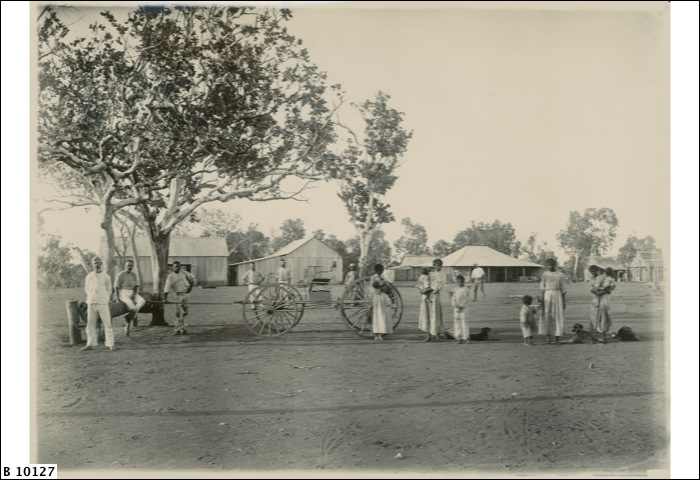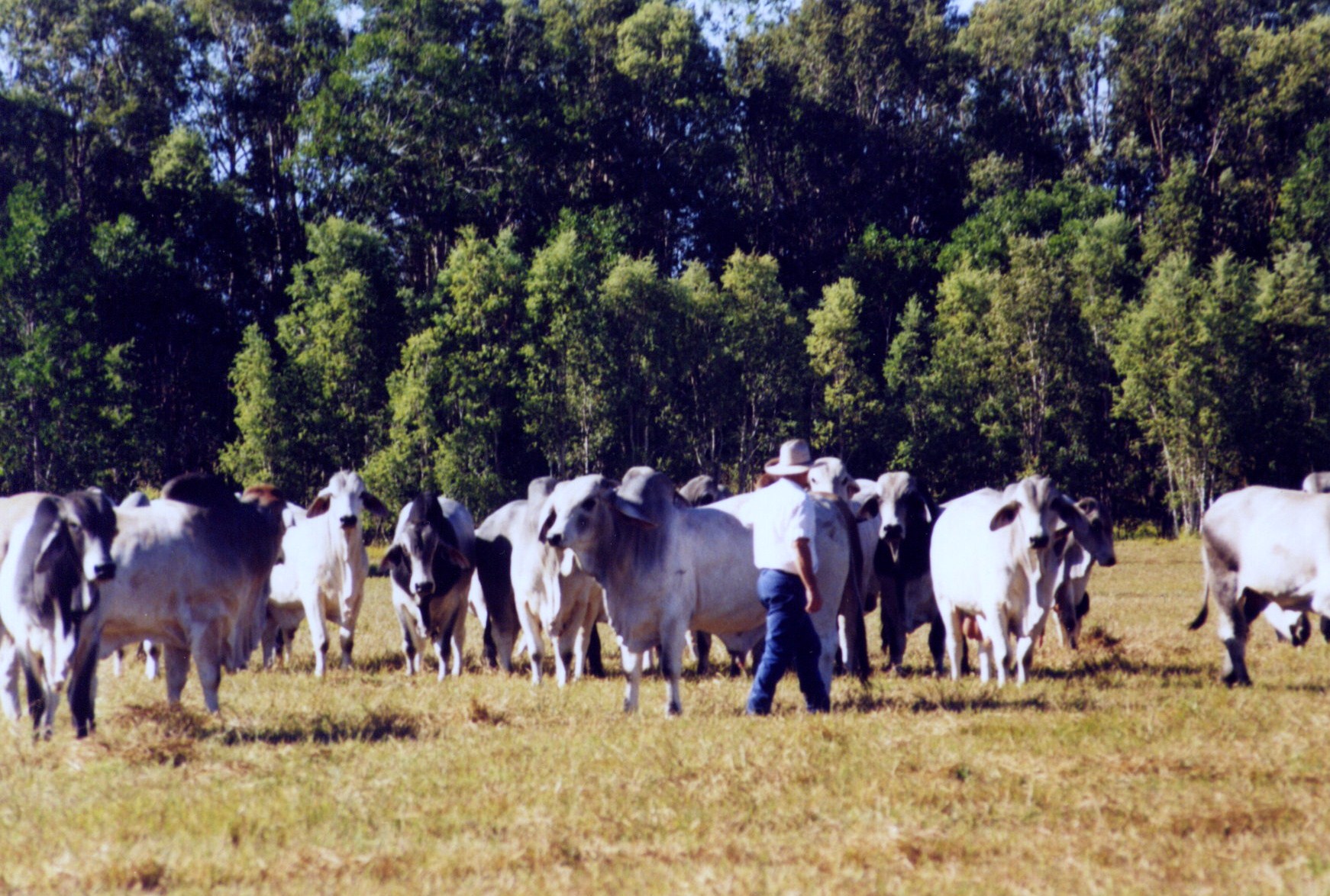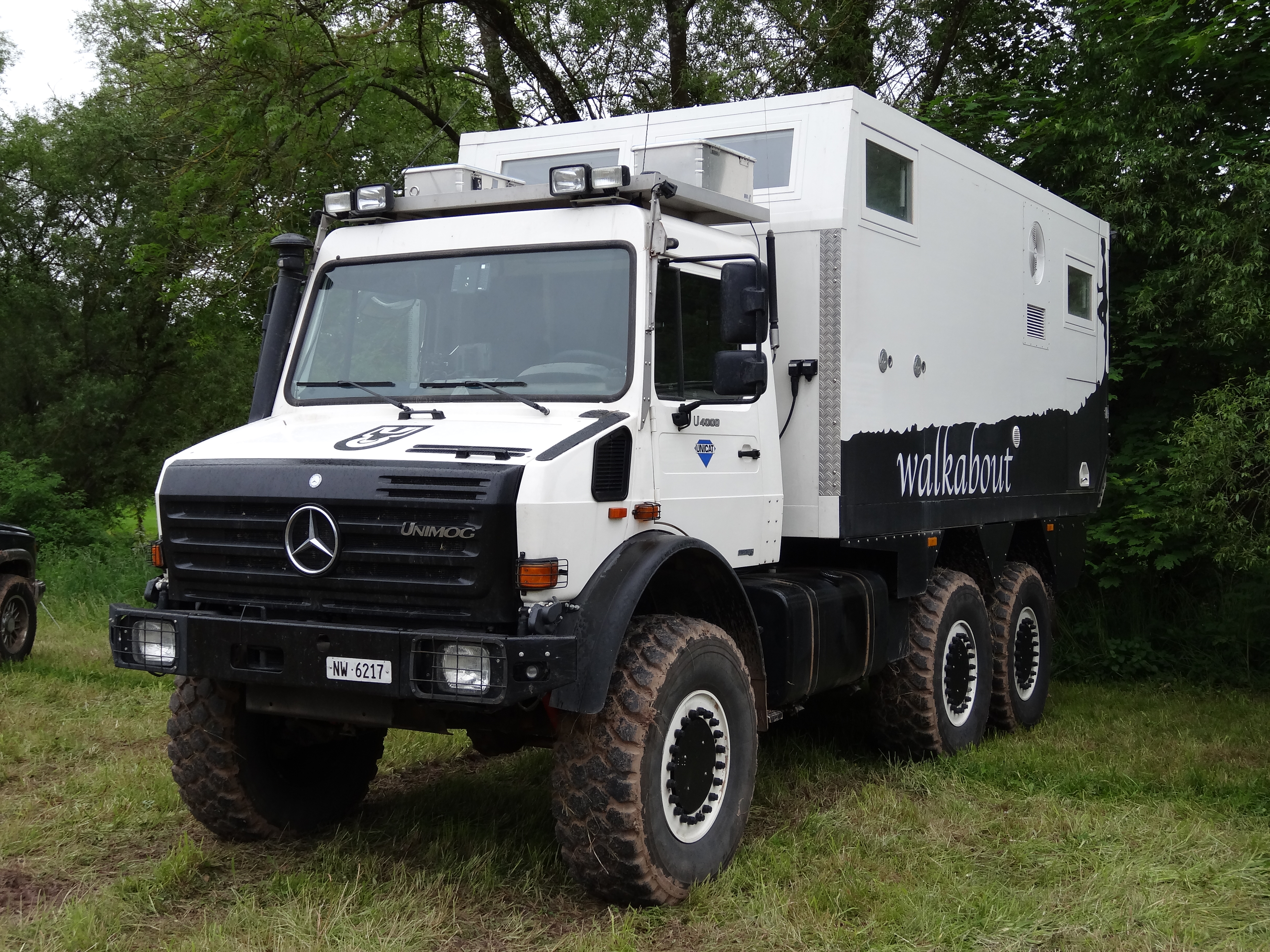|
Helen Springs Station
Helen Springs Station more commonly known as Helen Springs is a pastoral lease that operates as a cattle station. It is located about south of Elliott and east of Kalkaringi in the Northern Territory of Australia. The property shares a boundary with Banka Banka to the south, Eva Downs to the east, Ucharonidge and Tandyidgee to the north and Muckaty and Powell Creek Station to the west. History The station was founded prior to 1885 with Messrs Douglas and Hemphill's "stock ... running near Helen's Springs near Tompkinson Creek on the telegraph line". Composed primarily of open grazing land the property occupies an area of . Following a dry season in 1928, heavy rains came at the start of the wet season in 1929 causing the creeks to flood and waters to wash away several fences and large river gums. Edith Bohning and her daughters, Esther and Elsie, became known as the "petticoat drovers" when the two girls took a mob of cattle from Alice Springs to Adelaide by train in ... [...More Info...] [...Related Items...] OR: [Wikipedia] [Google] [Baidu] |
Cattle Station
In Australia and New Zealand, a cattle station is a large farm ( station is equivalent to the American ranch), the main activity of which is the rearing of cattle. The owner of a cattle station is called a '' grazier''. The largest cattle station in the world is Anna Creek Station in South Australia, which covers an area of . Improvements Each station has a homestead where the property owner or the manager lives. Nearby cottages or staff quarters provide housing for the employees. Storage sheds and cattle yards are also sited near the homestead. Other structures depend on the size and location of the station. Isolated stations will have a mechanic's workshop, schoolroom, a small general store to supply essentials, and possibly an entertainment or bar area for the owners and staff. Water may be supplied from a river, bores or dams, in conjunction with rainwater tanks. Nowadays, if rural mains power is not connected, electricity is typically provided by a generator, although sol ... [...More Info...] [...Related Items...] OR: [Wikipedia] [Google] [Baidu] |
Adelaide
Adelaide ( ) is the capital city of South Australia, the state's largest city and the fifth-most populous city in Australia. "Adelaide" may refer to either Greater Adelaide (including the Adelaide Hills) or the Adelaide city centre. The demonym ''Adelaidean'' is used to denote the city and the residents of Adelaide. The Traditional Owners of the Adelaide region are the Kaurna people. The area of the city centre and surrounding parklands is called ' in the Kaurna language. Adelaide is situated on the Adelaide Plains north of the Fleurieu Peninsula, between the Gulf St Vincent in the west and the Mount Lofty Ranges in the east. Its metropolitan area extends from the coast to the foothills of the Mount Lofty Ranges, and stretches from Gawler in the north to Sellicks Beach in the south. Named in honour of Queen Adelaide, the city was founded in 1836 as the planned capital for the only freely-settled British province in Australia. Colonel William Light, one of Adelaide's foun ... [...More Info...] [...Related Items...] OR: [Wikipedia] [Google] [Baidu] |
Sidney Kidman
Sir Sidney Kidman (9 May 18572 September 1935), known as Sid Kidman and popularly named "the Cattle King", was an Australian pastoral farming, pastoralist and entrepreneur who owned or co-owned large areas of land in Australia in his lifetime. Early life Sidney Kidman was born on 9 May 1857 in Adelaide, in the colony of South Australia, the third son of George Kidman (died December 1857), farmer, and his wife Elizabeth Mary, née Nunn. Kidman was educated at private schools in Norwood, South Australia, Norwood and left his home near Adelaide at age 13 with only five shillings and a one-eyed horse that he had bought with his savings. He joined a drover (Australian), drover and learned quickly. He then worked as a roustabout and bullock-driver at Poolamacca Station, Poolamacca cattle station, and Mount Gipps Station. and later as a drover, Stockman (Australia), stockman and livestock trader. He made money trading whatever was needed, and supplying services (transport, goods, a but ... [...More Info...] [...Related Items...] OR: [Wikipedia] [Google] [Baidu] |
Stanbroke Pastoral Company
Stanbroke Pastoral Company was a company once owned by AMP Limited that was once one of the largest land owners in Australia. Established in about 1964, by 2003 the company owned 27 cattle stations in Queensland and the Northern Territory controlling some of pastoral country. Properties owned by Stanbroke included; Augustus Downs, Davenport Downs and Tanbar Stations and in Queensland and Banka Banka, Brunchilly, Lake Nash and Helen Springs Station in the Northern Territory. The company was purchased in 2004 by the Nebo Group who paid 417.5 million plus taking on outstanding debts. The sale was by far the largest rural transaction in Australia's history and included a herd of approximately 5000,000 cattle. The Nebo group were a consortium made up of the founder of Hungry Jack's Hungry Jack's Pty Ltd. is an Australian fast food franchise of the Burger King Corporation. It is a wholly-owned subsidiary of Competitive Foods Australia, a privately held company owned by Jack ... [...More Info...] [...Related Items...] OR: [Wikipedia] [Google] [Baidu] |
Australian Broadcasting Corporation
The Australian Broadcasting Corporation (ABC) is the national broadcaster of Australia. It is principally funded by direct grants from the Australian Government and is administered by a government-appointed board. The ABC is a publicly-owned body that is politically independent and fully accountable, with its charter enshrined in legislation, the ''Australian Broadcasting Corporation Act 1983''. ABC Commercial, a profit-making division of the corporation, also helps to generate funding for content provision. The ABC was established as the Australian Broadcasting Commission on 1 July 1932 by an act of federal parliament. It effectively replaced the Australian Broadcasting Company, a private company established in 1924 to provide programming for A-class radio stations. The ABC was given statutory powers that reinforced its independence from the government and enhanced its news-gathering role. Modelled after the British Broadcasting Corporation (BBC), which is funded by a tel ... [...More Info...] [...Related Items...] OR: [Wikipedia] [Google] [Baidu] |
Canberra Times
''The Canberra Times'' is a daily newspaper in Canberra, Australia, which is published by Australian Community Media. It was founded in 1926, and has changed ownership and format several times. History ''The Canberra Times'' was launched in 1926 by Thomas Shakespeare along with his oldest son Arthur Shakespeare and two younger sons Christopher and James. The newspaper's headquarters were originally located in the Civic retail precinct, in Cooyong Street and Mort Street, in blocks bought by Thomas Shakespeare in the first sale of Canberra leases in 1924. The newspaper's first issue was published on 3 September 1926. It was the second paper to be printed in the city, the first being ''The Federal Capital Pioneer''. Between September 1926 and February 1928, the newspaper was a weekly issue. The first daily issue was 28 February 1928. In June 1956, ''The Canberra Times'' converted from broadsheet to tabloid format. Arthur Shakespeare sold the paper to John Fairfax Lt ... [...More Info...] [...Related Items...] OR: [Wikipedia] [Google] [Baidu] |
Brunette Downs Station
Brunette Downs Station, mostly referred to as Brunette Downs, is a pastoral lease operating as a cattle station in the Northern Territory of Australia. Location Brunette Downs Station is located in the Northern Territory about north-east of Tennant Creek, Northern Territory, Tennant Creek and about north west of Camooweal in Queensland. It is bounded by Rockhampton Downs Station to the west, Alroy Downs to the south, Mittiebah Station, Mittiebah and Alexandria Station (Northern Territory), Alexandria Station to the east and Cresswell Downs to the north. The ephemeral waterways Playford River (Northern Territory), Playford River, Brunette Creek, Cresswell Creek and Boree Creek all flow through the property. The Tablelands Highway bisects Brunette Downs. Description The station occupies an area of on the Barkly Tableland, and is currently owned by the Australian Agricultural Company. It is the second largest station in the Northern Territory (after Alexandria Station (No ... [...More Info...] [...Related Items...] OR: [Wikipedia] [Google] [Baidu] |
Barkly Tableland
The Barkly Tableland is a rolling plain of grassland in Australia. It runs from the eastern part of the Northern Territory into western Queensland. It is one of the five regions in the Northern Territory and covers , 21% of the Northern Territory. The Barkly Tableland runs parallel to the southern shore of the Gulf of Carpentaria, from about Mount Isa, Queensland to near Daly Waters. History William Landsborough was the first non-Indigenous Australian person to explore the tableland, and named it after Sir Henry Barkly, then governor of Victoria. In 1877 the overlander, Nathaniel Buchanan and Sam Croker crossed the Barkly Tableland and rode on to the Overland Telegraph Line opening new land for settlement. It was not until the introduction of generous leasing arrangements on the Barkly in the late 1870s that the region became more settled. In 1883, Harry Readford, one of the inspirations for the literary character Captain Starlight, drove a mob of cattle to the Barkly and ... [...More Info...] [...Related Items...] OR: [Wikipedia] [Google] [Baidu] |
Victoria River Downs Station
Victoria River Downs Station, also known as Victoria Downs and often referred to as The Big Run, is a pastoral lease that operates as a cattle station in the Northern Territory of Australia. Location It is located about south east of Timber Creek and west of Daly Waters in the Northern Territory. The property abuts the Daguragu Aboriginal Land Trust to the south, Camfield Station, Montejinni and Killarney Stations to the east, Delamere to the north and Humbert River Station and the Bilinarra-Jutpurra Aboriginal Land Trust to the west. The Auvergne and Wave Hills Stock routes both pass through the station as does the Buntine Highway that passes through the south east corner. Description Currently Victoria River Downs has an area of The property was once the world's largest pastoral property with an area of , but following much of the land being resumed it is now less than half its former size, and less than half the size of the current largest, Anna Creek station. Seve ... [...More Info...] [...Related Items...] OR: [Wikipedia] [Google] [Baidu] |
Stockman (Australia)
In Australia a stockman (plural stockmen) is a person who looks after the livestock on a large property known as a station (Australian agriculture), station, which is owned by a wikt:grazier, grazier or a grazing company, traditionally on horseback. In this sense it has a similar meaning to "cowboy". A stockman may also be employed at an abattoir, feedlot, on a livestock export ship, or with a stock and station agency. Associated terms Stockmen who work with the cattle in the Top End are known as ringers and are often only employed for the dry season which lasts from April to October. A station hand is an employee who is involved in routine duties on a rural property or station, which may also involve caring for livestock. With pastoral properties facing dire recruitment problems as young men are lured into the booming mining industry, young women from the cities are becoming a common sight on outback stations, often attracted by the chance to work with horses. An associated ... [...More Info...] [...Related Items...] OR: [Wikipedia] [Google] [Baidu] |
Rotinoff Viscount , ballast tractor made by Rotinoff Motors
{{disambiguation, surname ...
Rotinoff may refer to: *Alexander Rotinoff (1875-1934), Russian architect *Rotinoff Motors, British commercial vehicle manufacturer *Rotinoff Super Atlantic The Rotinoff Super Atlantic is a 6×4 ballast tractor made by the British company Rotinoff Motors Ltd. The Swiss Army bought ten of them (in Atlantic and Super Atlantic configuration) in 1958, which they used to pull trailers built by Scheuerle ... [...More Info...] [...Related Items...] OR: [Wikipedia] [Google] [Baidu] |
Overlanding
Overlanding is self-reliant overland travel to remote destinations where the journey is the principal goal. Typically, but not exclusively, it is accomplished with mechanized off-road capable transport (from bicycles to trucks) where the principal form of lodging is camping, often lasting for extended lengths of time (months to years) and spanning international boundaries. History Historically, "overlanding" is an Australian term to denote the droving of livestock over very long distances to open up new country or to take livestock to market far from grazing grounds. Between 1906 and 1910 Alfred Canning opened up the Canning Stock Route. In Australia overlanding was inspired to a large degree by Len Beadell who, in the 1940s and 1950s, constructed many of the roads that opened up the Australian Outback to colonizers. Those roads are still used today by Australian overlanders and still hold the names Len gave them; the Gunbarrel Highway, the Connie Sue Highway (named after his da ... [...More Info...] [...Related Items...] OR: [Wikipedia] [Google] [Baidu] |


.jpg)






